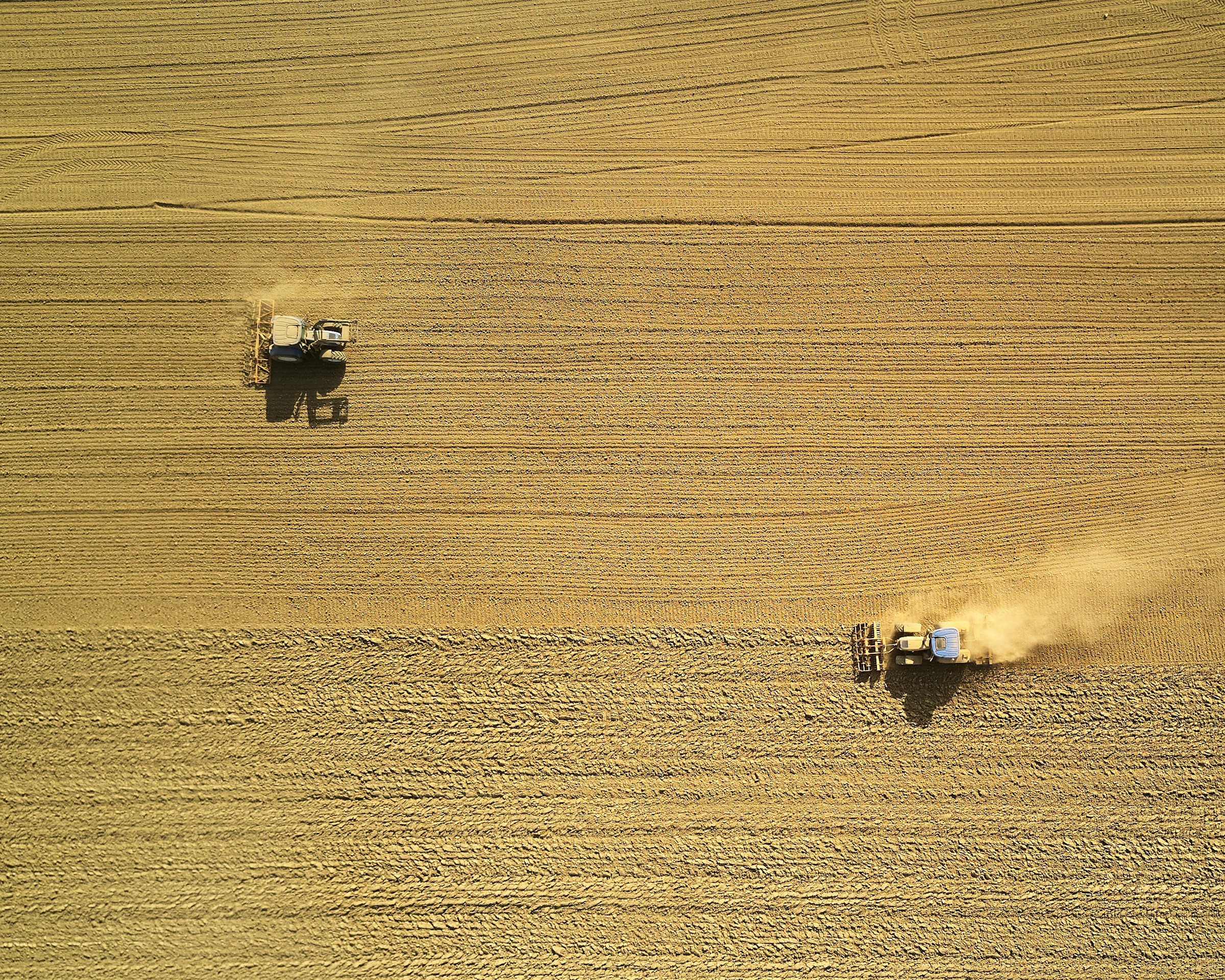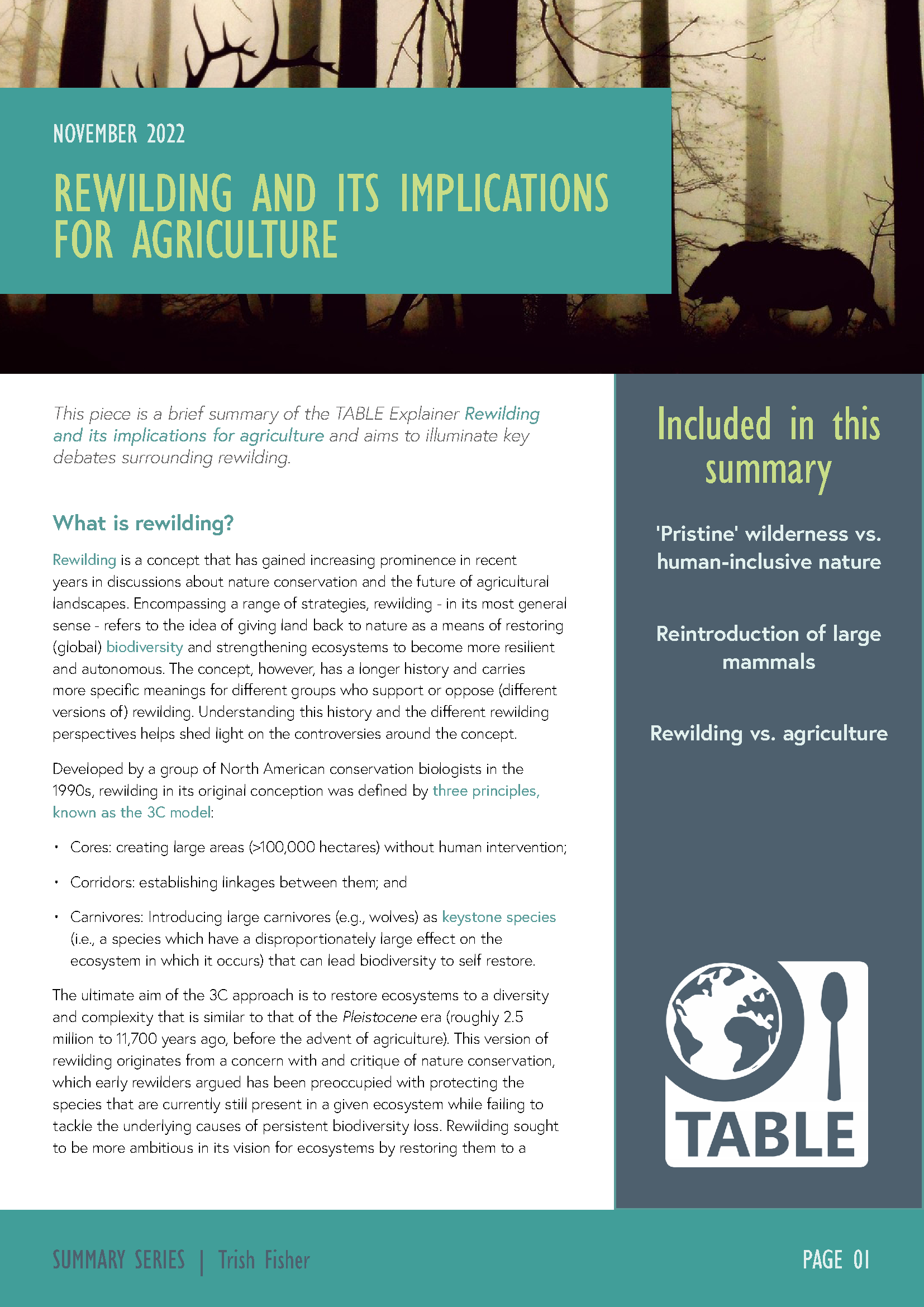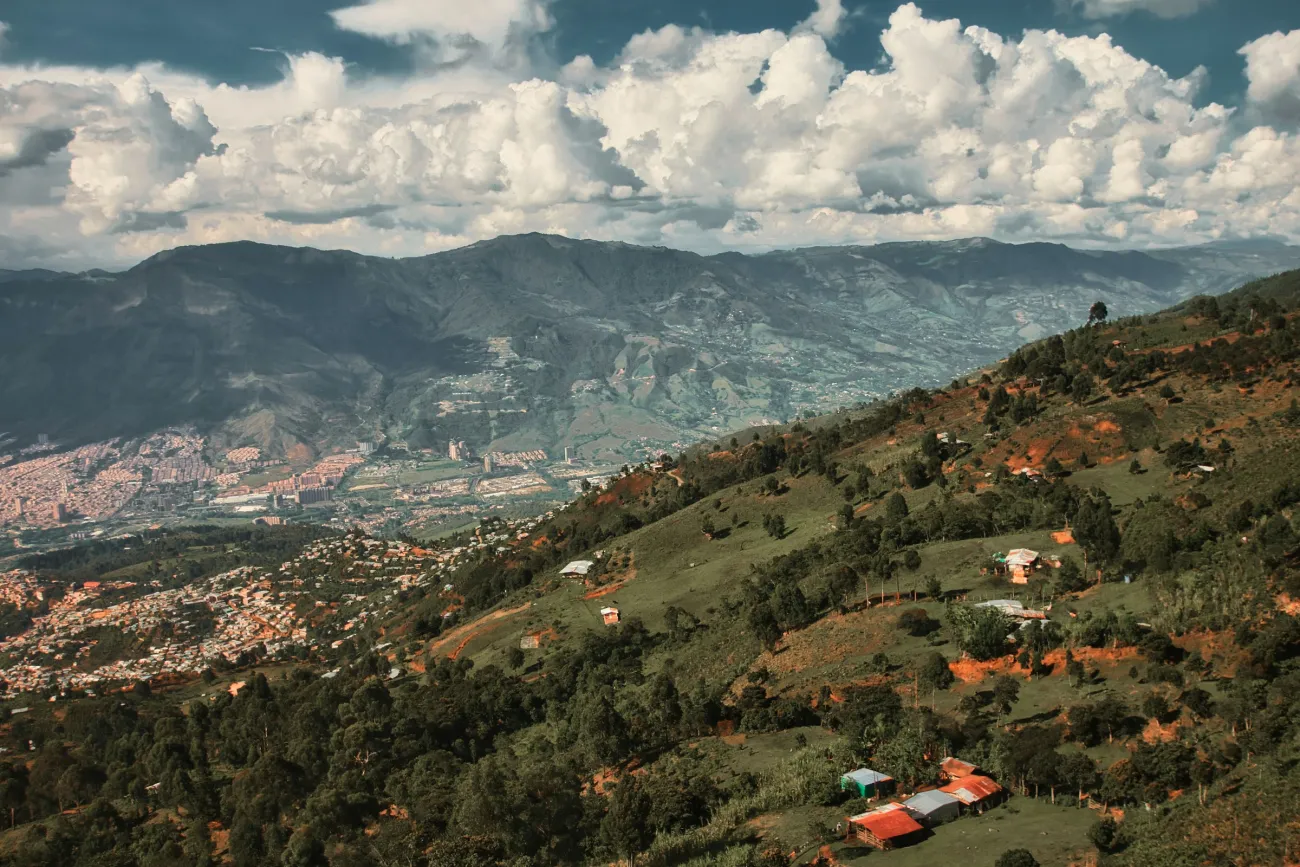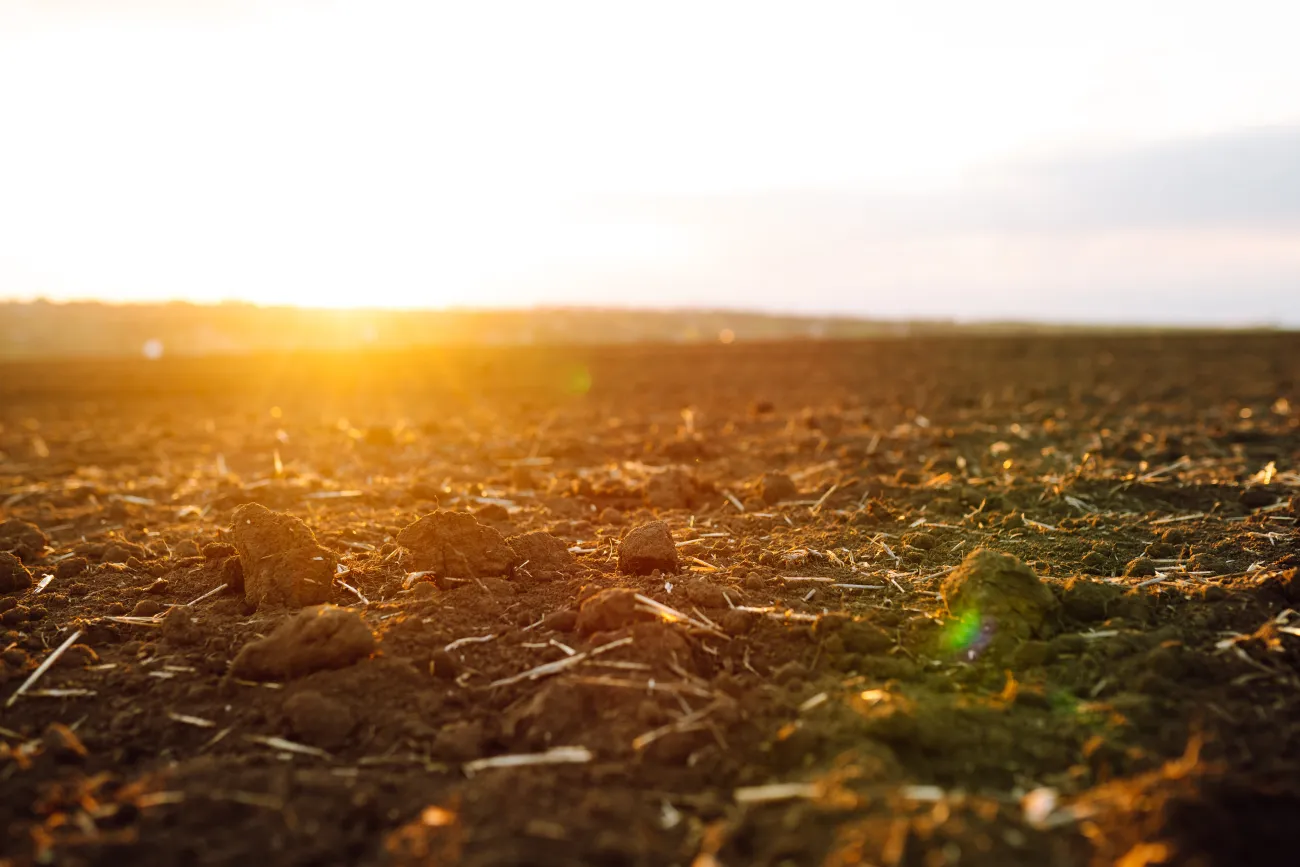In recent years, rewilding as an idea and in its appeal has grown beyond the academic field of conservation biology and gained wider traction among a diverse group of stakeholders including environmentalists, philanthropists, journalists, corporations, farmers, and policymakers. In practice, most rewilding efforts share a focus on restoring the functional complexity of ecosystems. Given its implications for land use, agriculture, and humans’ relationship with nature, rewilding is a subject of significant contestation. Debates about rewilding have evolved from a focus on the reintroduction of (locally) extinct species and their relatives, to a wider discussion about the future of nature, agriculture, and rural landscapes in the Anthropocene.
‘Pristine’ wilderness vs. human-inclusive nature
One of the most central debates about rewilding concerns the relationship between humans and nature and the question of whether ‘pristine’ wilderness, free of human intrusion, should be the ideal for conservation efforts. The original proponents of rewilding believe that humanity has marginalised nature by giving it ever less space, at devastating cost to biodiversity. Their 3C approach builds on and revamps a tradition in the North American conservation movement that is preoccupied with the protection of ‘wilderness’ and which can be found in the work of John Muir and others who contributed to the development of the first national parks in the US. This conception of wilderness has critics both within and outside the rewilding movement. Much of the criticism about the explicit focus on human-free wilderness draws from a socio-historical lens that positions rewilding within a much longer tradition of eco-imperialist and colonialist conservation activities that have often gone hand in hand with the eviction, denigration, and displacement of rural and Indigenous communities. Furthermore, the idea of ‘pristine’ wilderness ignores the role of Indigenous peoples and other rural communities in managing supposedly ‘wild’ landscapes for centuries or millennia. This critique sees rewilding as legitimising existing inequalities and undermining conservation agendas that support both social and ecological justice.
As the rewilding movement has grown, many newer adherents have abandoned the idea of historical baselines and seek to create new ways for humans and wildlife to live together in the Anthropocene. These proponents of rewilding advocate for a more future-oriented approach that embraces a human-inclusive ethos which seeks ‘win- wins’ for both humans and nature; many argue for a mixed approach of both isolated places and human-inclusive sites. This branch of the rewilding movement places more emphasis on ‘wildness’ (a quality of being) rather than ‘wilderness,’ and emphasises the potential for human land use and nature to be synergistic. However, critics of rewilding note that not all of these more future-oriented approaches are truly more human-inclusive, despite their rhetoric.
Reintroduction of large mammals
Key to the original concept of rewilding is the idea that keystone species that have since gone extinct (or their functional analogues) must be reintroduced to restore ecosystems. Two primary approaches to reintroducing (locally) extinct species have been pursued by rewilding projects: back breeding and genetic engineering. Back breeding entails the deliberate, selective breeding of animals in an attempt to restore traits they are thought to share with extinct species. For example, Heck cattle are commonly used in European conservation projects as they are thought to be similar to extinct aurochs which once lived in Eurasia. Genetic engineering is a highly controversial strategy in which the genome of a living species is edited to more closely resemble that of an extinct relative species. Current genetic engineering methods cannot create an exact copy of an extinct species (although this may be possible in the future), but rather an animal with similar traits.
Critics of large mammal reintroductions believe that their proponents rely on oversimplified understandings of how reintroduced species will interact with their environment and nearby human population centres. In particular, critics point to the risk of human-wildlife conflicts (particularly in regards to the potential reintroduction of large carnivores) and the potential for reintroduced species to have comparable impacts to so-called ‘invasive’ species, namely devastating existing populations of ‘native’ species. (The native/invasive species dichotomy and invasive species’ purported negative impacts on ecosystems are also contested ideas in parts of the rewilding movement.)
Rewilding vs. agriculture
The future of agriculture and farming communities constitutes a major area of discussion in the rewilding debate. If rewilding were to significantly scale-up, much of the land dedicated to rewilding efforts would realistically require agricultural land to be taken out of production or, at the very least, used in very different ways. As such, many agricultural communities are opposed to rewilding given the necessity of agricultural land use change to achieve rewilding goals.
Among proponents of rewilding, there is disagreement regarding the most effective approach to balancing conservation goals with agricultural production. On
one extreme end of the rewilding debate, rewilding proponents aim to free up the maximum amount of land for nature by intensifying agricultural production (i.e., land sparing). This perspective is exemplified by the controversial ‘Nature Needs Half’ campaign which aims to protect half of earth for conservation by 2030 (although the campaign also emphasises the role of nature conservation in protecting traditional livelihoods such as smallholder agriculture). Other rewilding proponents take a more conciliatory approach and seek to foster rewilding goals wherever possible, while balancing other socioeconomic priorities including agricultural production.
This approach is more aligned with the regenerative agriculture and agroecology movements which are, broadly speaking, more closely associated with a land sharing model that integrates both agricultural production and nature conservation on the same land. Despite these different approaches to agricultural production within the rewilding movement, there are also areas of broad alignment. Many in the rewilding movement agree that wider, socioeconomic changes are necessary to alter our relationship with nature and create conditions under which nature could flourish (e.g., reducing the global consumption of land-intensive foods such as meat and dairy).







Comments (0)